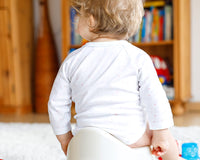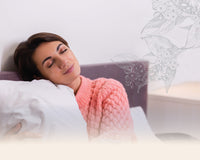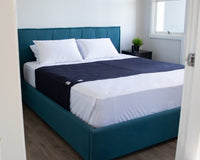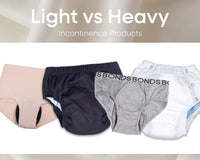Did you know that there are multiple types of incontinence? There isn’t only urinary and faecal leakage, there are other types of incontinence including stress incontinence, urge incontinence, overflow incontinence and mixed incontinence.
In our article, we will discuss the types of incontinence to know about, and advise which of our reusable incontinence products are the best solution for the different types of incontinence experienced by boys and girls, men and women around Australia and the world.
Urinary Incontinence
What causes Urinary Incontinence?
Urinary incontinence is the loss of bladder control and is usually caused by issues with muscle and nerve problems that would normally hold or pass urine.
What is the most common type of urinary incontinence?
The two most common types of urinary incontinence that affect women are stress incontinence and urge incontinence, also called overactive bladder.
 This may be because pregnancy, childbirth, and menopause may make urinary incontinence more likely. Urinary incontinence is not a normal part of the aging process and we will go into further detail on how it can be managed, treated or even cured.
This may be because pregnancy, childbirth, and menopause may make urinary incontinence more likely. Urinary incontinence is not a normal part of the aging process and we will go into further detail on how it can be managed, treated or even cured.
Often, those affected by incontinence may ask:
- What are the different types of incontinence?
- What type of incontinence do I have?

Stress incontinence
The most common type of incontinence is stress incontinence. Stress incontinence is when urine leaks as a result of exerting pressure on your bladder, or when your bladder is under pressure caused by normal movement, coughing, sneezing, laughing, exercising, gym activity, playing sport, walking or running, or lifting anything heavy.
Stress incontinence is normally associated with lighter leakage during the daytime and is able to be managed by using incontinence underwear, incontinence pants or incontinence pads.
Urge incontinence / Overactive bladder / Hyperactive incontinence
Urge incontinence is the involuntary loss of urine (wee) associated with urgency (a sudden and strong need to urinate).
In a normal bladder, usually when the bladder is about half full, you’ll feel the need to go to the toilet.
A healthy bladder can usually hold up to about 600mls of urine. Also, with a healthy bladder, most people can then hold on after the initial feeling until it’s convenient to go to the toilet.
If a person has urge incontinence, they can get a strong feeling to urinate even when the bladder is nowhere near full.
This can occur in both men and women. The feeling of needing to urinate can often result in the expulsion of urine before reaching the toilet. Urge incontinence can result in the feeling of needing to urinate more frequently.
Whether it’s accidental, or a feeling of urgency or the frequent feeling to relieve yourself, can interfere with everyday activities because of the need to keep going to the toilet.
Urge incontinence can be associated with light-to-moderate leakage during the daytime as well as overnight. As such, lighter incontinence underwear and light incontinence pants as well as incontinence pads may be suitable, however heavy incontinence products for men and women may be required.
Overflow incontinence
People who have an overflow incontinence condition can non-voluntarily leak urine whilst sitting or lying down without any added pressure like coughing or any particular movement involved etc.
Similar to urge incontinence, overflow incontinence can be associated with light-to-moderate leakage during the daytime as well as overnight. As such, lighter incontinence underwear and light incontinence pants as well as incontinence pads may be suitable, however heavy incontinence products for men and women may be required.
Mixed Incontinence
Mixed incontinence is usually the combination of both overactive bladder/overflow incontinence and stress incontinence.
Most women with incontinence have a combination of stress and urge symptoms which can be quite challenging at times.
For men with mixed incontinence, it can usually be the result of having had prostate removal surgery for an enlarged prostate.
Mixed incontinence is quite common in frail and elderly people both male and female.
As above, we recommend a combination of light incontinence underwear during the day and heavier, full waterproof incontinence pants for overnight use.
These heavy incontinence pants used overnight are also able to be used with absorbent bed pads or waterproof bed linen.

How do you fix incontinence? Which common types of incontinence are avoidable?
Incontinence is able to be treated and can even be avoidable.

- Do daily pelvic floor exercises.
- Stop smoking if you are a smoker
- Reduce your caffeine intake if you are a coffee drinker,
- Do the right exercises
- Lose excess weight
- Avoid heavy lifting
- Reduce your consumption of alcohol if necessary
- Treat constipation promptly
NIGHT N DAY is a registered NDIS provider.
----------------------------------------------------------------------------------------------
Should you require any product assistance … Did you know that we manufacture a complete range of incontinence products including absorbent underwear and waterproof pads? Some of these products also double as period-proof underwear.
We're with you Night n Day
If you have any questions about incontinence or want to know what incontinence products are the best for you or your loved one don’t hesitate to contact our friendly Customer Service team
- THERE’S NO SUCH THING AS A SILLY QUESTION!
----------------------------------------------------------------------------------------------
Email: gday@nightnday.com.au
Australia: (02) 9531 2011
International: +61 2 9531 2011
P: +61 2 9531 2011
Disclaimer: No content on this website, or in this article, regardless of date, should ever be used as a substitute for direct medical advice from your doctor or other qualified clinician.









2 comments
Night N Day
Hi Paulene, We hope the 4 types of incontinence blog information has been useful. Thank you.
Paulene Scott-Mahanga
Very interested